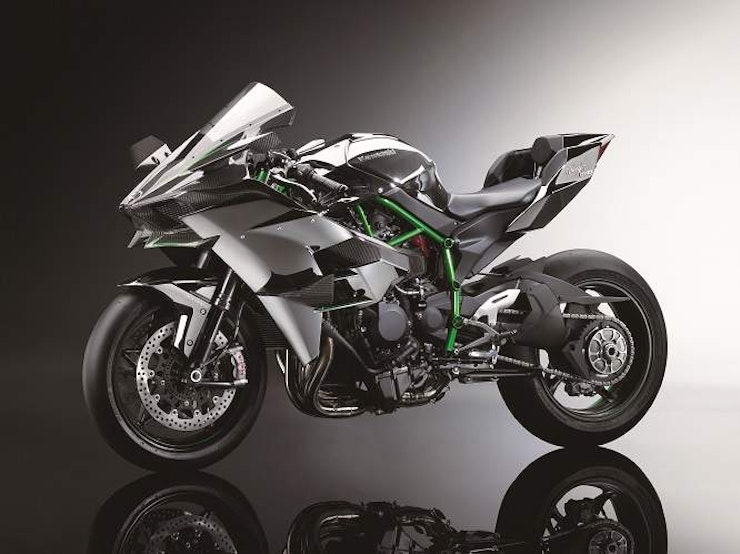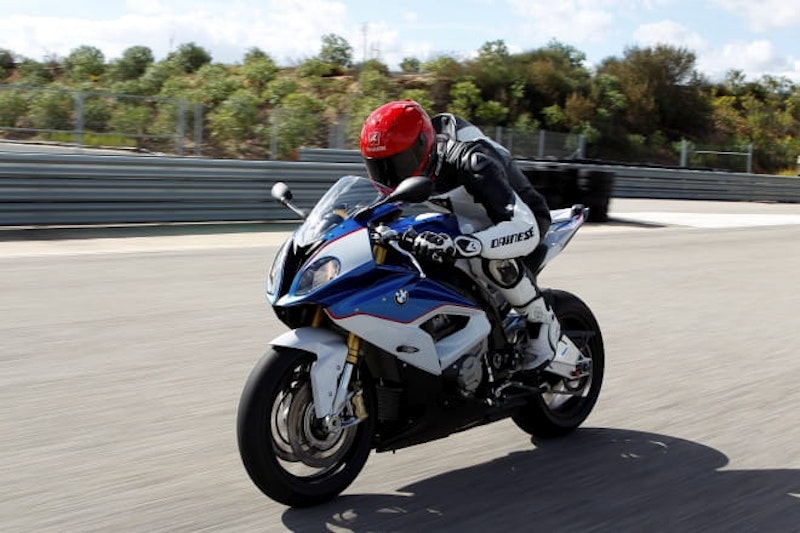Author: Bike Social's Industry Insider Posted: 28 Oct 2014
More power, sir?
Controversy can be a good thing. It sparks debate and debate ignites/reignites interest in whatever the subject of controversy is. Kawasaki’s recent announcement and reveal of the H2R – its latest flagship 1000cc sports bike – has opened a catering-sized tin of controversy and interest. Its design rationale of being extremely fast (nothing new here) has meant incorporating supercharger technology to go hand in hand with latest engine design to meet a proposed ‘nearly’ 300-horsepower target set by Kawasaki hierarchy. Suddenly all motorcyclists are interested.
Ok, so the H2R is will be hand-built and for use only on a ‘closed course’… and we’re all a monkey’s uncle. The one thing that could possibly stop an H2R hitting the road is the expected £50k price tag. As with all unique, hand-built factory machines (Honda RC30/45, Yamaha R7 etc), the high price is expected and those that can afford such a special machine will buy one.
You can understand certain people’s knee-jerk reaction to the announcement of a 300bhp motorcycle. Politicians of the EU Parliament have apparently got their printed Flag of Europe knickers in a twist because it wasn’t many years ago (2010) that The EU Commission (the bureaucrats) were working on a proposal for the EU Parliament (the politicians) to vote for a 100HP motorcycle limit across Europe. Although the proposal ended up on a shelf it hasn’t been forgotten. Suddenly, four years down the line, Kawasaki throws a 300HP curved ball at the world sparking controversy.
Kawasaki isn’t the only manufacturer that is rattling the EU Commission’s cage. BMW Motorrad’s latest S1000RR deals out 199HP, and Ducati’s exotic 1199 Superleggera makes a claimed 200HP. The Bologna Brigade are expected to unveil a 1299 Panigale at EICMA next week and that should knock on the door of 200Hp too. Rumour has it that Yamaha’s 2015 version of their venerable R1 will be complete with a snarling 200HP big-bang lump. Honda and Suzuki have remained tight-lipped about their next 1000cc offerings but they’ve never been one to sit idly by and let the others slug it out in the battle for supremacy. Incidentally, Kawasaki’s H2 will likely be a 250bhp missile.
When you think about it, all the major manufacturers are putting big investment in the hyper/superbike class to make them technologically endowed and powerful – which in turn usually means faster. This is a surprise because for the past few years even the motorcycle industry agrees sales of 1000cc sports bike class is on its arse. And the long-standing ‘gentleman’s agreement’ between the manufacturers of 186mph (300kmh) still holds – although records show that most 1000+cc bikes do cross over this speed limit in the right conditions. So what gives?
Motorcycle racing, be it track or off-road, is an important aspect of motorcycling. Winning success translates to showroom sales. When MotoGP regulations enforced an 800cc cap in its blue riband class, the world expected all manner of sports replicas to follow suit and the knock on effect would see World Superbike with the same 800cc limit. Pah! That notion didn’t last long because MotoGP is back up to the 999cc limit. So is racing to blame for the latest shot of big horsepower? No.
Take a look at the car world. Bugatti’s Veyron Grand Sport makes a claimed 1001HP and is an open top tool. You don’t see any spec Veyron in a production or championship race series. But Bugatti can’t make enough of the potent Veyron series to meet demand. Because of price and performance, it’s an exclusive vehicle and very desirable. Is this the same reasoning behind Kawasaki’s tactical push of the H2R? Is it just a marketing exercise to ramp up the whole brand through technological exclusivity, performance and, ultimately desirability? Let’s not forget the fact that a supercharged machine isn’t eligible in any road racing class.
For many motorcyclists a 200 or 300HP motorcycle would top the Xmas present list, but who could actually ride one well enough to be safe on such a machine? Plenty by all accounts. The correlation between motorcycle power output and accident statistics has been proven not to be linked; an European study some years ago revealed more riders were likely to have an accident on a 750cc sports bike than a 1000cc (more powerful) touring/everyday style of machine. This raises questions on whether better bike training is required or if the majority of motorcyclists would be better off on a bike best suited to their ability rather than simply following the crowd? Both of these subjects are great talking points for another time.
At the moment, 1000cc sports bikes look to be staying with us. The big question is: do we need more power? Just because systems like ABS and TCS make our rides safer they don’t stop anyone ‘nailing the bitch’, braking too late or failing to recognise dangerous situations. Greater power outputs simply make riding life a little bit more difficult for most of us.
John Robinson (deceased) was an authority on motorcycling. Technically brilliant, a demon rider and respected motorcycle journalist, John carried some clout in the world of motorcycling journalism. Fascinated by technology and engine and chassis performance, if there was ever a debate about bike power outputs John always declared that with the right rider onboard, a road-going motorcycle didn’t require any more than a 100HP to be near the front of a pack and generally enjoy riding a motorcycle. There are many of us who still agree with him. What’s your view?
Share on social media:

